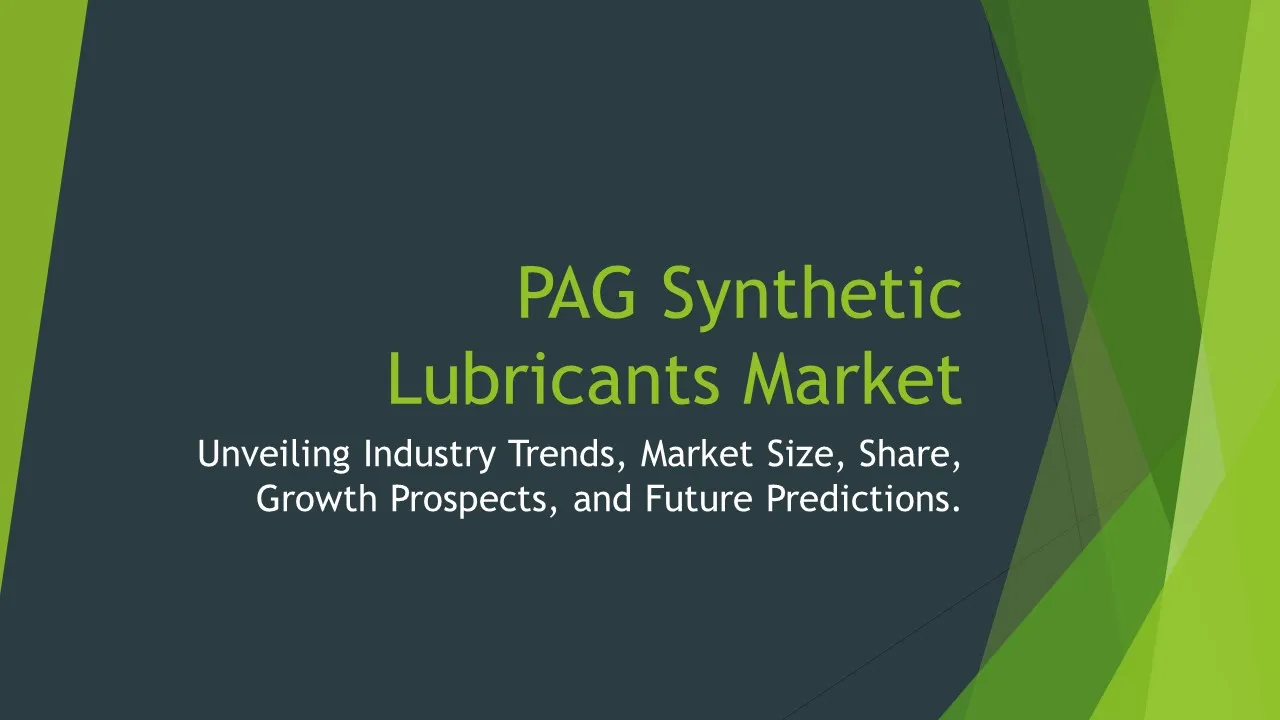Compound Type Seed Coating Agent
Seed Coating Agent Market Segments - by Product Type (Polymer-Based Seed Coating Agents, Colorants, Binders, Minerals/Pellets, and Polymers), Application (Cereals & Grains, Fruits & Vegetables, Flowers & Ornamentals, and Others), Distribution Channel (Online Stores, Agriculture Supply Stores, Direct Sales, and Others), Ingredient Type (Polymers, Pesticides, Colorants, Binders, and Others), and Region (North America, Europe, Asia Pacific, Latin America, and Middle East & Africa) - Global Industry Analysis, Growth, Share, Size, Trends, and Forecast 2025-2035
- Report Preview
- Table Of Content
- Segments
- Methodology
Compound Type Seed Coating Agent Market Outlook
The global seed coating agent market is poised to reach USD 3.72 billion by 2035, expanding at a robust compound annual growth rate (CAGR) of 6.9% during the forecast period from 2025 to 2035. This growth can be attributed to a confluence of factors including the rising demand for high-quality seeds, increasing agricultural productivity, and the growing focus on sustainable farming practices. Additionally, advancements in coating technologies and an increase in government initiatives to promote agricultural efficiency further bolster market expansion. The heightened emphasis on crop protection and enhancement through seed treatment solutions also plays a pivotal role in driving the market forward. As the agricultural sector continues to evolve, the seed coating agent market is set to experience significant momentum in the coming years.
Growth Factor of the Market
The growth of the seed coating agent market is primarily driven by the increasing need for enhanced seed performance and yield improvement in agricultural practices. As farmers seek to maximize crop output while minimizing losses, seed coating agents offer essential benefits such as protection against pests, diseases, and environmental stressors, which are crucial for ensuring successful germination and healthy crop establishment. Moreover, the ongoing transition towards precision agriculture is propelling the adoption of seed treatment solutions that facilitate targeted application techniques, thus optimizing resource use and mitigating environmental impacts. The growing awareness of sustainable farming practices among consumers and stakeholders is leading to a heightened demand for eco-friendly seed coating products. Additionally, the rise in the cultivation of high-value crops such as fruits and vegetables, which require specialized seed treatment, is anticipated to fuel further growth in the seed coating agent market.
Key Highlights of the Market
- Projected market size of USD 3.72 billion by 2035 with a CAGR of 6.9% from 2025 to 2035.
- Increasing demand for high-quality seeds and advanced agricultural practices.
- Improvements in seed performance through the use of coating agents that provide pest and disease protection.
- Growing focus on sustainable farming practices and eco-friendly products.
- Technological advancements in seed coating processes promoting higher efficiency.
By Product Type
Polymer-Based Seed Coating Agents:
Polymer-based seed coating agents are gaining prominence in the market due to their multifunctional properties that enhance seed performance and protect against environmental stress. These agents are designed to provide a controlled release of nutrients and protect seeds from adverse conditions, thereby improving germination rates and overall plant health. The use of biodegradable polymers further aligns with sustainable agricultural practices, as they minimize environmental impact compared to traditional coatings. As the demand for high-yield crops continues to rise, polymer-based seed coatings are increasingly being favored for their ability to deliver tailored solutions for various seed types and environmental conditions.
Colorants:
Colorants used in seed coating agents serve both aesthetic and functional purposes, enhancing the visibility of seeds for easier handling and application. The application of colorants ensures that seeds are uniformly coated, which is essential for protecting them during storage and planting. Additionally, colorants can contribute to seed identification and differentiation in mixed cropping systems, thereby improving operational efficiency for farmers. The technological advancements in colorant formulations allow for the production of non-toxic and environmentally friendly options, which are increasingly preferred in the market due to growing consumer concerns about chemical usage in agriculture.
Binders:
Binders play a crucial role in seed coating formulations, ensuring that all components adhere to the seed surface effectively. They are responsible for enhancing the durability of the coating, protecting against abrasion and environmental factors during handling and planting. As the trend towards the use of organic and natural binders gains traction, manufacturers are innovating to develop products that are both effective and compliant with organic farming standards. The demand for binders that facilitate the slow release of nutrients and pesticides is also on the rise, as farmers look for solutions to improve seed performance while reducing chemical load.
Minerals/Pellets:
Minerals and pellets are integral components of seed coating agents, providing essential nutrients and enhancing seed size for better handling. Pelleted seeds are easier to plant and manage, allowing for more efficient sowing practices. The incorporation of minerals into seed coatings not only improves germination rates but also strengthens seedlings against diseases and pests. With the increasing focus on enhancing soil fertility and crop resilience, the demand for mineral-based seed coatings is expected to grow as farmers seek to improve overall crop quality and yield.
Polymers:
Polymers used in seed coatings act as both protective and functional barriers, facilitating the absorption of water and nutrients while shielding seeds from harmful conditions. They enhance the seed's ability to withstand environmental stressors such as drought and temperature fluctuations, thereby improving overall crop establishment and productivity. The continued research and development in polymer technology are leading to the creation of advanced coatings that optimize seed germination and growth. As farmers increasingly adopt precision agriculture practices, the role of polymers in seed coatings is expected to expand, offering tailored solutions for specific crop and environmental requirements.
By Application
Cereals & Grains:
The application of seed coating agents in cereals and grains is critical for improving germination rates and protecting seeds from pests and diseases. With a significant global demand for staple foods, the use of coated seeds in this segment is projected to increase. Coating agents in this category not only enhance seed performance but also play a vital role in ensuring higher yields and improving the efficiency of input use. As trends toward sustainable farming practices rise, more farmers are turning to seed coating solutions that offer environmentally friendly options while maintaining high productivity levels in cereal and grain cultivation.
Fruits & Vegetables:
The fruits and vegetables segment is witnessing a surge in the use of seed coating agents due to the growing emphasis on quality and yield. Coated seeds provide essential protection against soil-borne diseases and improve seed viability, contributing to a successful harvest. Additionally, the coatings can be formulated to include nutrients and bio-stimulants that promote healthy growth and development of seedlings. As consumers increasingly demand fresh and quality produce, the application of seed coating agents in this sector is likely to expand, encouraging more farmers to adopt these innovative solutions.
Flowers & Ornamentals:
In the flowers and ornamentals segment, seed coating agents are crucial for enhancing aesthetic appeal and ensuring robust growth. Coatings can assist in protecting delicate seeds during handling and planting, reducing losses associated with poor germination. The customization of coatings with colorants allows for differentiation and branding in the ornamental market, attracting consumer interest. With the rise in gardening and landscaping trends, the demand for coated flower seeds is expected to increase, promoting the adoption of seed coating technologies tailored for this specific application.
Others:
The 'Others' segment encompasses various niche applications where seed coating agents are utilized for specialized crops and purposes. This includes the cultivation of herbs, spices, and other non-traditional crops that benefit from enhanced seed performance. These coating solutions are designed to address specific challenges faced by farmers in these segments, such as susceptibility to diseases and harsh environmental conditions. As agricultural diversification continues to be a focus, the demand for innovative seed coating agents in this category is likely to grow, offering new opportunities for manufacturers.
By Distribution Channel
Online Stores:
Online stores have emerged as a significant distribution channel for seed coating agents, providing convenience and accessibility to farmers and agricultural stakeholders. The rise in e-commerce platforms allows consumers to compare products, access detailed information, and purchase seed coatings without geographical constraints. Online suppliers often offer a wider range of products and competitive pricing, making it an attractive option for farmers looking for specific seed treatment solutions. This channel's convenience is expected to drive growth in the market as more agricultural businesses embrace digital purchasing methods.
Agriculture Supply Stores:
Agriculture supply stores serve as traditional distribution points for seed coating agents, offering a range of products that cater to local farmers' needs. These stores often provide on-ground support and expert advice, helping farmers select the best coating solutions for their specific crops and conditions. The ability to physically inspect products and receive guidance from knowledgeable staff enhances the purchasing experience for customers. As more farmers prioritize quality and expert recommendations, the importance of agriculture supply stores in distributing seed coating agents remains strong.
Direct Sales:
Direct sales channels, including those operated by seed coating manufacturers, allow for personalized engagement with customers and the provision of tailored solutions. This channel enables companies to establish relationships with farmers and provide in-depth product training and support, enhancing customer loyalty. Direct sales can also allow for the customization of seed coating solutions based on specific agricultural needs, thus driving customer satisfaction. As manufacturers recognize the value of direct engagement, the role of direct sales in the seed coating agent market is anticipated to expand.
Others:
The 'Others' category encompasses alternative distribution channels, such as cooperatives and agronomic services, that play a role in the distribution of seed coating agents. These channels enable farmers to access products through collective buying arrangements or professional recommendations based on agronomic expertise. The diversity of distribution channels in the market fosters healthy competition and ensures that farmers have access to various seed coating solutions. As the agricultural sector evolves, these alternative distribution methods will continue to play a vital role in supporting the market's growth.
By Ingredient Type
Polymers:
Polymers are a fundamental ingredient in seed coating agents, providing numerous benefits such as moisture retention, nutrient delivery, and protection against environmental stressors. They enhance seed performance by creating an optimal micro-environment for germination, thereby increasing the likelihood of successful seed establishment. The innovation in polymer technology has led to the development of biodegradable options that align with sustainable agricultural practices. As farmers increasingly adopt environmentally friendly solutions, the demand for polymer-based seed coatings is expected to rise, driving market growth.
Pesticides:
Pesticides incorporated into seed coating formulations offer essential protection against pests and diseases that threaten seed viability and crop establishment. The use of coated seeds treated with pesticides contributes to reducing crop losses and enhancing yield potential. With the growing focus on food security and the need for effective pest management strategies, the demand for pesticide-infused seed coatings is likely to increase. Additionally, the development of targeted pesticide coatings that minimize environmental impact is expected to support market growth as farmers seek more sustainable options.
Colorants:
Colorants are increasingly recognized as an essential ingredient in seed coating agents, serving to enhance seed visibility and facilitate identification during planting. They provide practical benefits by ensuring uniform application and reducing the risk of misplacement or incorrect planting of seeds. The trend toward non-toxic and eco-friendly colorants is gaining traction, aligning with the growing consumer demand for sustainability in agriculture. As the market evolves, the use of colorants in seed coatings is anticipated to expand, offering manufacturers increased opportunities for innovation.
Binders:
Binders are crucial for ensuring the effective adhesion of coating materials to seeds, enhancing the durability and performance of the coatings. They contribute to the overall efficacy of seed coatings by improving material stability and reducing abrasion during handling and planting. The growing trend towards organic and natural binders is reflective of the broader shift in agriculture towards less chemical-intensive practices. As farmers continue to prioritize seed protection and quality, the demand for innovative binder formulations in seed coatings is expected to increase, supporting market growth.
Others:
The 'Others' category includes various additional ingredients used in seed coating formulations, such as fertilizers and bio-stimulants, which play essential roles in enhancing seed performance. These ingredients contribute to improved germination rates and seedling vigor by providing nutrients directly at the seed level. As the emphasis on integrated seed treatment solutions grows, the incorporation of diverse ingredients will continue to expand, offering farmers comprehensive options for optimizing crop production. The versatility of these formulations allows for tailored solutions that address specific agricultural challenges, driving further growth in the seed coating agent market.
By Region
The North American seed coating agent market is expected to exhibit a substantial growth trajectory, with a projected market size of approximately USD 1.1 billion by 2035. This region is characterized by advanced agricultural practices and a strong emphasis on crop productivity, which drives the adoption of innovative seed treatment solutions. The increasing focus on sustainable farming and environmental stewardship among farmers in the U.S. and Canada is further contributing to the demand for eco-friendly seed coating agents. With a CAGR of 7.2% anticipated during the forecast period, North America is poised to remain a key player in the global seed coating agent market.
In Europe, the seed coating agent market is also expected to experience significant growth, driven by stringent regulations on chemical usage and a heightened consumer focus on organic produce. The market is estimated to reach around USD 900 million by 2035, with countries like Germany, France, and the Netherlands leading the charge in adopting advanced seed treatment technologies. The region's commitment to sustainable agriculture and innovation in seed coating solutions will continue to foster growth opportunities. Furthermore, the increasing awareness of the importance of seed health and quality among European farmers is anticipated to support the overall market expansion.
Opportunities
The seed coating agent market presents numerous opportunities for growth, particularly as the agricultural sector continues to evolve toward more sustainable and efficient practices. Innovations in coating technologies are enabling the development of multifunctional coatings that not only protect seeds but also enhance their nutritional profile and resilience to environmental stresses. This trend aligns with the global push toward sustainable agriculture, fostering demand for seed coatings that are environmentally friendly yet effective. Moreover, the increasing need for food security amid a growing global population creates an urgent demand for high-yielding crop varieties, further driving the adoption of advanced seed coating solutions.
Additionally, the growing trend of precision agriculture offers significant opportunities for seed coating manufacturers. By leveraging data analytics and technology, farmers can make informed decisions on seed treatments tailored to specific soil conditions and crop needs, thus enhancing overall agricultural efficiency. The integration of smart technologies such as drones and IoT devices in agriculture is also paving the way for innovative applications of seed coating agents, providing manufacturers with new avenues to explore. Furthermore, as consumer preferences shift towards organic and chemical-free produce, the demand for bio-based and organic seed coatings is expected to surge, presenting a lucrative opportunity for market players.
Threats
Despite the promising growth prospects for the seed coating agent market, several threats could hinder market expansion. One major challenge is the increasing scrutiny and regulation regarding the use of chemicals in agriculture, particularly pesticides and fertilizers incorporated into seed coatings. As governments and regulatory bodies impose stricter guidelines on agricultural inputs, manufacturers may face significant hurdles in developing compliant products. Additionally, the growing consumer preference for organic farming could limit the market for traditional chemical-based seed coatings, compelling companies to invest in research and development of alternative solutions, which may require substantial resources and time.
Another potential threat is the volatility in raw material prices associated with the production of seed coating agents. Fluctuations in the costs of polymers, colorants, and other ingredients can impact profit margins and pricing strategies for manufacturers. Furthermore, as the market becomes increasingly competitive, companies may face pressure to reduce prices, which could further strain profitability. This competitive landscape necessitates constant innovation and differentiation to retain market share, adding pressure on companies to continuously enhance their product offerings while managing costs effectively.
Competitor Outlook
- BASF SE
- Clariant AG
- Novozymes A/S
- Seed Coating Solutions
- Croda International Plc
- FMC Corporation
- Syngenta AG
- Upstream Agri Solutions
- Kemin Industries, Inc.
- Verdesian Life Sciences
- Agrium Inc.
- YARA International ASA
- Shandong Tiansheng Bio-Tech Co., Ltd.
- Hawkeye Innovations, LLC
- Valagro S.p.A.
The competitive landscape of the seed coating agent market is characterized by the presence of both established players and emerging companies striving to capture a share of the growing market. Major multinational corporations such as BASF SE and Syngenta AG leverage their extensive research and development capabilities and global distribution networks to maintain a competitive edge. These companies frequently engage in strategic partnerships and collaborations to innovate and expand their product offerings, ensuring they remain at the forefront of technological advancements in seed coating solutions. Moreover, the focus on sustainability has led many players to develop eco-friendly products that align with changing consumer preferences, positioning them favorably in the market.
In addition to large corporations, numerous smaller players and startups are emerging, capitalizing on niche opportunities within the seed coating agent market. Companies like Upstream Agri Solutions and Hawkeye Innovations, LLC are focusing on developing customized coating solutions that cater to specific crop needs and regional agricultural practices. Their agility and ability to respond quickly to market changes enable them to carve out a unique space in the competitive landscape. Furthermore, the increasing emphasis on organic and natural seed treatment options is prompting players to diversify their product portfolios, showcasing their commitment to sustainability and appealing to environmentally conscious consumers.
As companies strive to differentiate themselves in a crowded market, innovation remains a key driver of success. Firms such as Novozymes A/S and Kemin Industries, Inc. are investing heavily in research and development to create advanced seed coating technologies that enhance seed performance and sustainability. This focus on innovation not only helps companies stay competitive but also fosters long-term partnerships with farmers seeking reliable and effective seed treatment solutions. The dynamic nature of the seed coating agent market ensures that companies must continually adapt to emerging trends, regulatory changes, and consumer demands to thrive in this evolving landscape.
1 Appendix
- 1.1 List of Tables
- 1.2 List of Figures
2 Introduction
- 2.1 Market Definition
- 2.2 Scope of the Report
- 2.3 Study Assumptions
- 2.4 Base Currency & Forecast Periods
3 Market Dynamics
- 3.1 Market Growth Factors
- 3.2 Economic & Global Events
- 3.3 Innovation Trends
- 3.4 Supply Chain Analysis
4 Consumer Behavior
- 4.1 Market Trends
- 4.2 Pricing Analysis
- 4.3 Buyer Insights
5 Key Player Profiles
- 5.1 BASF SE
- 5.1.1 Business Overview
- 5.1.2 Products & Services
- 5.1.3 Financials
- 5.1.4 Recent Developments
- 5.1.5 SWOT Analysis
- 5.2 Agrium Inc.
- 5.2.1 Business Overview
- 5.2.2 Products & Services
- 5.2.3 Financials
- 5.2.4 Recent Developments
- 5.2.5 SWOT Analysis
- 5.3 Clariant AG
- 5.3.1 Business Overview
- 5.3.2 Products & Services
- 5.3.3 Financials
- 5.3.4 Recent Developments
- 5.3.5 SWOT Analysis
- 5.4 Syngenta AG
- 5.4.1 Business Overview
- 5.4.2 Products & Services
- 5.4.3 Financials
- 5.4.4 Recent Developments
- 5.4.5 SWOT Analysis
- 5.5 Novozymes A/S
- 5.5.1 Business Overview
- 5.5.2 Products & Services
- 5.5.3 Financials
- 5.5.4 Recent Developments
- 5.5.5 SWOT Analysis
- 5.6 Valagro S.p.A.
- 5.6.1 Business Overview
- 5.6.2 Products & Services
- 5.6.3 Financials
- 5.6.4 Recent Developments
- 5.6.5 SWOT Analysis
- 5.7 FMC Corporation
- 5.7.1 Business Overview
- 5.7.2 Products & Services
- 5.7.3 Financials
- 5.7.4 Recent Developments
- 5.7.5 SWOT Analysis
- 5.8 Kemin Industries, Inc.
- 5.8.1 Business Overview
- 5.8.2 Products & Services
- 5.8.3 Financials
- 5.8.4 Recent Developments
- 5.8.5 SWOT Analysis
- 5.9 Seed Coating Solutions
- 5.9.1 Business Overview
- 5.9.2 Products & Services
- 5.9.3 Financials
- 5.9.4 Recent Developments
- 5.9.5 SWOT Analysis
- 5.10 YARA International ASA
- 5.10.1 Business Overview
- 5.10.2 Products & Services
- 5.10.3 Financials
- 5.10.4 Recent Developments
- 5.10.5 SWOT Analysis
- 5.11 Croda International Plc
- 5.11.1 Business Overview
- 5.11.2 Products & Services
- 5.11.3 Financials
- 5.11.4 Recent Developments
- 5.11.5 SWOT Analysis
- 5.12 Upstream Agri Solutions
- 5.12.1 Business Overview
- 5.12.2 Products & Services
- 5.12.3 Financials
- 5.12.4 Recent Developments
- 5.12.5 SWOT Analysis
- 5.13 Verdesian Life Sciences
- 5.13.1 Business Overview
- 5.13.2 Products & Services
- 5.13.3 Financials
- 5.13.4 Recent Developments
- 5.13.5 SWOT Analysis
- 5.14 Hawkeye Innovations, LLC
- 5.14.1 Business Overview
- 5.14.2 Products & Services
- 5.14.3 Financials
- 5.14.4 Recent Developments
- 5.14.5 SWOT Analysis
- 5.15 Shandong Tiansheng Bio-Tech Co., Ltd.
- 5.15.1 Business Overview
- 5.15.2 Products & Services
- 5.15.3 Financials
- 5.15.4 Recent Developments
- 5.15.5 SWOT Analysis
- 5.1 BASF SE
6 Market Segmentation
- 6.1 Compound Type Seed Coating Agent Market, By Application
- 6.1.1 Cereals & Grains
- 6.1.2 Fruits & Vegetables
- 6.1.3 Flowers & Ornamentals
- 6.1.4 Others
- 6.2 Compound Type Seed Coating Agent Market, By Product Type
- 6.2.1 Polymer-Based Seed Coating Agents
- 6.2.2 Colorants
- 6.2.3 Binders
- 6.2.4 Minerals/Pellets
- 6.2.5 Polymers
- 6.3 Compound Type Seed Coating Agent Market, By Ingredient Type
- 6.3.1 Polymers
- 6.3.2 Pesticides
- 6.3.3 Colorants
- 6.3.4 Binders
- 6.3.5 Others
- 6.4 Compound Type Seed Coating Agent Market, By Distribution Channel
- 6.4.1 Online Stores
- 6.4.2 Agriculture Supply Stores
- 6.4.3 Direct Sales
- 6.4.4 Others
- 6.1 Compound Type Seed Coating Agent Market, By Application
7 Competitive Analysis
- 7.1 Key Player Comparison
- 7.2 Market Share Analysis
- 7.3 Investment Trends
- 7.4 SWOT Analysis
8 Research Methodology
- 8.1 Analysis Design
- 8.2 Research Phases
- 8.3 Study Timeline
9 Future Market Outlook
- 9.1 Growth Forecast
- 9.2 Market Evolution
10 Geographical Overview
- 10.1 Europe - Market Analysis
- 10.1.1 By Country
- 10.1.1.1 UK
- 10.1.1.2 France
- 10.1.1.3 Germany
- 10.1.1.4 Spain
- 10.1.1.5 Italy
- 10.1.1 By Country
- 10.2 Asia Pacific - Market Analysis
- 10.2.1 By Country
- 10.2.1.1 India
- 10.2.1.2 China
- 10.2.1.3 Japan
- 10.2.1.4 South Korea
- 10.2.1 By Country
- 10.3 Latin America - Market Analysis
- 10.3.1 By Country
- 10.3.1.1 Brazil
- 10.3.1.2 Argentina
- 10.3.1.3 Mexico
- 10.3.1 By Country
- 10.4 North America - Market Analysis
- 10.4.1 By Country
- 10.4.1.1 USA
- 10.4.1.2 Canada
- 10.4.1 By Country
- 10.5 Middle East & Africa - Market Analysis
- 10.5.1 By Country
- 10.5.1.1 Middle East
- 10.5.1.2 Africa
- 10.5.1 By Country
- 10.6 Compound Type Seed Coating Agent Market by Region
- 10.1 Europe - Market Analysis
11 Global Economic Factors
- 11.1 Inflation Impact
- 11.2 Trade Policies
12 Technology & Innovation
- 12.1 Emerging Technologies
- 12.2 AI & Digital Trends
- 12.3 Patent Research
13 Investment & Market Growth
- 13.1 Funding Trends
- 13.2 Future Market Projections
14 Market Overview & Key Insights
- 14.1 Executive Summary
- 14.2 Key Trends
- 14.3 Market Challenges
- 14.4 Regulatory Landscape
Segments Analyzed in the Report
The global Compound Type Seed Coating Agent market is categorized based on
By Product Type
- Polymer-Based Seed Coating Agents
- Colorants
- Binders
- Minerals/Pellets
- Polymers
By Application
- Cereals & Grains
- Fruits & Vegetables
- Flowers & Ornamentals
- Others
By Distribution Channel
- Online Stores
- Agriculture Supply Stores
- Direct Sales
- Others
By Ingredient Type
- Polymers
- Pesticides
- Colorants
- Binders
- Others
By Region
- North America
- Europe
- Asia Pacific
- Latin America
- Middle East & Africa
Key Players
- BASF SE
- Clariant AG
- Novozymes A/S
- Seed Coating Solutions
- Croda International Plc
- FMC Corporation
- Syngenta AG
- Upstream Agri Solutions
- Kemin Industries, Inc.
- Verdesian Life Sciences
- Agrium Inc.
- YARA International ASA
- Shandong Tiansheng Bio-Tech Co., Ltd.
- Hawkeye Innovations, LLC
- Valagro S.p.A.
- Publish Date : Jan 20 ,2025
- Report ID : CH-16652
- No. Of Pages : 100
- Format : |
- Ratings : 4.5 (110 Reviews)









